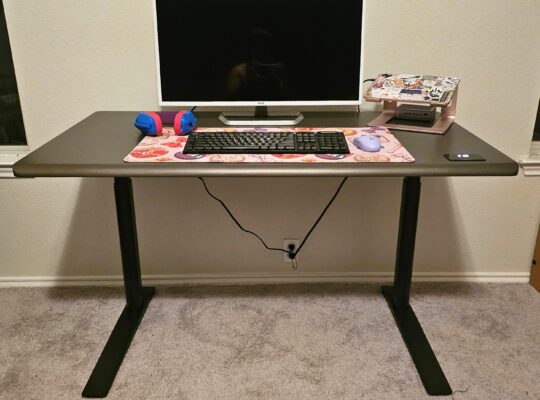Seven seasons in, Adult Swim’s Rick and Morty has defined a specific sense of humor and style: witty, referential humor combined with grotesque sci-fi hijinks. It’s become so recognizable that it’s surprising how well it translates into another genre with its own iconic look – anime. Rick and Morty: The Anime, the series’ first major spinoff, takes the conventions of sci-fi anime – over-the-top fight scenes, slow pacing, and lots of emoting – and chucks Rick, Morty, and their friends and enemies into the mix. The result is as unexpected as it is bizarre; think Rick and Morty: The Drama, jokes (and Rick’s constant burping) not included. And two episodes in, it’s hard to tell if all that transformation is a good thing or not.
When Adult Swim surprise-dropped the first Rick and Morty anime short in March 2020, it was both captivating and inspired. Directed by Kaichi Sato and produced by Studio Deen (Hetalia: Axis Powers; The Seven Deadly Sins) “Samurai & Shogun” transported Rick Sanchez and Morty Smith to feudal-era Japan, playing with the series’ infinite universes to stage an epic beautifully rendered alien battle. It showed off new possibilities for the franchise as a more traditional sci-fi series, a refreshing tweak on a formula that was starting to get repetitive. The positive response led to Adult Swim commissioning four more Rick and Morty shorts over the next 18 months, with director Takashi Sano’s two entries as the most ambitious. More than four years after Sano released the dramatic, lore-heavy “Rick and Morty vs. Genocider,” he returns as the sole writer-director of a full-length, 10-episode Rick and Morty anime. And like the “Genocider” short—and its follow-up, “Summer Meets God (Rick Meets Evil),” Rick and Morty: The Anime is keen on going deeper on those sides of the series, shunting most of the comedy off to the side.
While the anime opens on a familiar sight for Rick and Morty – Rick in space, fending off the Galactic Federation and escaping with the help of his granddaughter, Summer – it quickly pivots into something that feels tonally distinct from the main show. After a gorgeously detailed, J-pop-heavy opening, the focus shifts to Morty, kickstarting an at-times surreal, episode-length subplot reminiscent of series highlight “The Vat of Acid Episode.” A VR game Rick designed for his grandson puts Morty through an emotional wringer at lightning speed, living through multiple lifetimes in different universes: falling in love with a mysterious warrior girl named L, forging a (faintly homoerotic) relationship with an older player named Frank, and even becoming a successful politician in a surprisingly faithful Citizen Kane parody.
Both episodes involve hefty amounts of timeline-hopping. The series’ Rick Prime storyline, in which Rick (a.k.a. Rick C-137) tries to destroy his murderous original, plays a major part of Rick and Morty: The Anime, which kicks off a fun reinvention of an existing arc. But as with its take on Morty, this show’s version of Rick dials back the constant quips and nihilism. He’s still a flask-wielding, law-skirting mad scientist, but he’s also a devoted father and grandfather sifting through the multiverse to protect his family. By dramatically retelling this series-spanning plotline, the anime focuses on establishing high stakes rather than telling the jokes that usually accompany them.
This is where these two episodes differ most from their source material. It’s true that Rick and Morty is a deeper show than its semi-ironic catchphrases and McDonald’s-terrorizing memes suggest, with a lot of heart mixed into the humor and action. But it’s still funny first and foremost. Yet the opening chapters of Rick and Morty: The Anime are light on dialogue, let alone laughs. When Morty runs away from a monster in the main show, he typically whines, protests, and blames his grandpa. Here, he yells wordlessly, until the scene cuts away to take him to a different universe altogether. By not lingering on any scene too long – or having the characters speak too much – the anime almost seems like it’s making up for its rigid, limited animation. Low-budget animation can be forgiven; the choppy, 3D-rendered fight scenes, not so much.
While less dialogue sounds like a minor thing, the consistently pared-down scripts makes for just one of several jarring changes that add up into Rick and Morty fan fiction, not the anime-ified remake some fans might have hoped for. The characters barely interact with each other during the first two episodes, depriving us of Rick and Morty’s dynamic – which, one could argue, is kind of the point of the whole show. A character who memorably died in the original show is alive here, with no explanation (at least, not yet). Ian Cardoni, Harry Belden, Chris Parnell, Spencer Grammer, Sarah Chalke, and their co-stars aren’t involved in the English dub, which could also be a sticking point; the new voice actors do a good job, but they emote much less than we’re used to from these characters. (Adult Swim will also air an English-subtitled version of the show, featuring the Japanese dub cast, which could be a more fun option.)
Two episodes in, it’s hard to tell if all this transformation is a good thing or not.
Then again, maybe Rick and Morty: The Anime shouldn’t be exactly the same as the show it’s derived from. What makes Sano’s initial shorts fun is how unlike Rick and Morty they are: They boil the franchise down to its key characters and bits of lore, with an emphasis on surreal imagery and experimental storytelling. Even without the trademark humor, that a Rick and Morty anime produced by a well-known Japanese studio exists at all proves that the franchise still has untapped, playful potential after seven seasons and nearly 11 years on the air.












